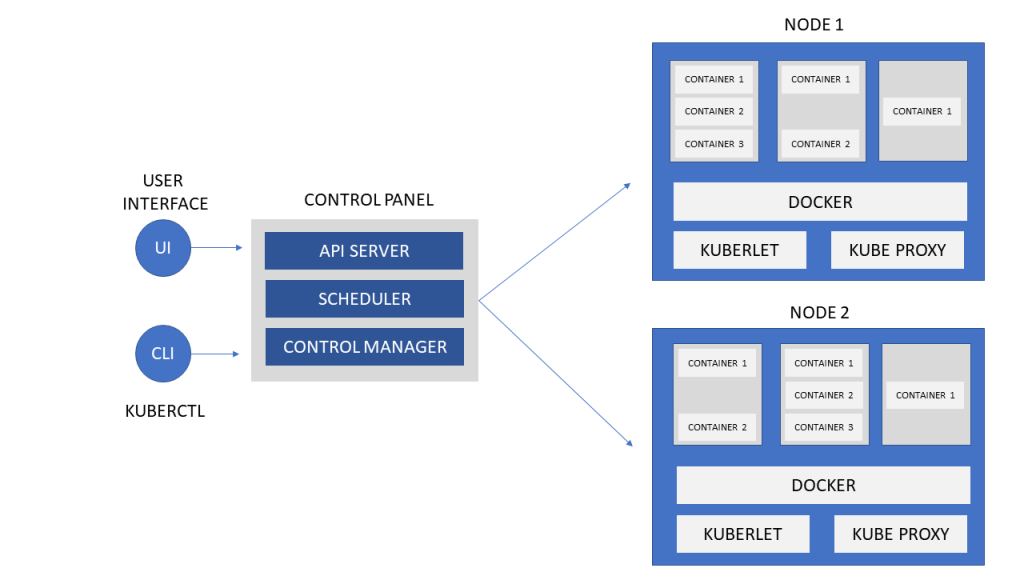Kubernetes is an open source microservice architecture based on container systems where containerized application can be deployed, scaled and managed anywhere.
An abstraction layer is created on the top of the hosts applications such that developers can deploy, manage their applications using Kubernetes.
So how does KUBERNETES work?
Kubernetes works on the basis of the concept of clusters; A cluster is combination of multiple virtual and physical systems that each can serve as a specialized operation either as a Node or as a Master.
Master is a controller of nodes and their containers, which also communicates with nodes to command how the traffic has to re-routed to new aligned containers.

KUBERNETES MASTER:
The master is the control Panel (Access Point) where the administrators and user interact with clusters to deploy, scale and manage nodes.
KUBERNETES NODES:
The clusters in all nodes have to be configured with a container runtime which is a Docker usually. As the container runtime is engaged, Kubernetes deploys them in nodes and your application (Database server, Web Server…etc) is operated inside the container.
BENEFITS, COMPANIES GAINS FROM KUBERNETES:
- AUTOMATED CONTANERIZED ENVIRONMENT
Kubernetes makes the possibility of using containerized environment by acting as a orchestration system, As contained does not requires Full OS to run, instead shares the OS Kernels from the host making the container smaller, faster and more portable than Virtual Machines.
- ABILITY TO RUN ON ANYTHING
Whether running a bare metal server or private cloud for your workloads, Kubernetes has an ability to run on any operating system but restricted to run only of OS released on or after 2016 and any newer version of Linux and windows.
- MULTI_CLOUD CAPABILITIES
As Kubernetes is known for its portability, it can run in a single cloud environment or can spread to a multiple cloud environment. As of today, the major cloud providers offer special instances like EKS, GKE and AKS which makes easy for every organization to use the full advantage of multi-cloud environment using the existing cloud providers.
- DEVELOPER PRODUCTIVITY
Kubernetes and its declarative infrastructure have changed the deployment methodology which allows developers to access and make use of GitOps, which team can scale, create and deploy nodes as faster time than ever could have been in the past.
- OPTIMIZED IT COST
Kubernetes helps organization through its dynamic and intelligent container administration where everything is automated from operational tasks to system management replacing the IT Teams.
- CLOUD MIGRATION
Kubernetes makes the migration from an on-premises environment to Private or Public Cloud in a simpler and faster way using its cloud migration methodologies.
LIFT& SHIFT: Migration without any changes on coding.
REPLATFORMING: Minor changes is needed to rum the application on a new environment
REFACTORING: Extensive rewriting of coding is needed for application structure to regains its functionality.
- NATIVE TOOL
As Kubernetes is a open source model, it has numerous amount of native third party solutions and applications which are provided for monitoring, testing, security etc.
![]()
